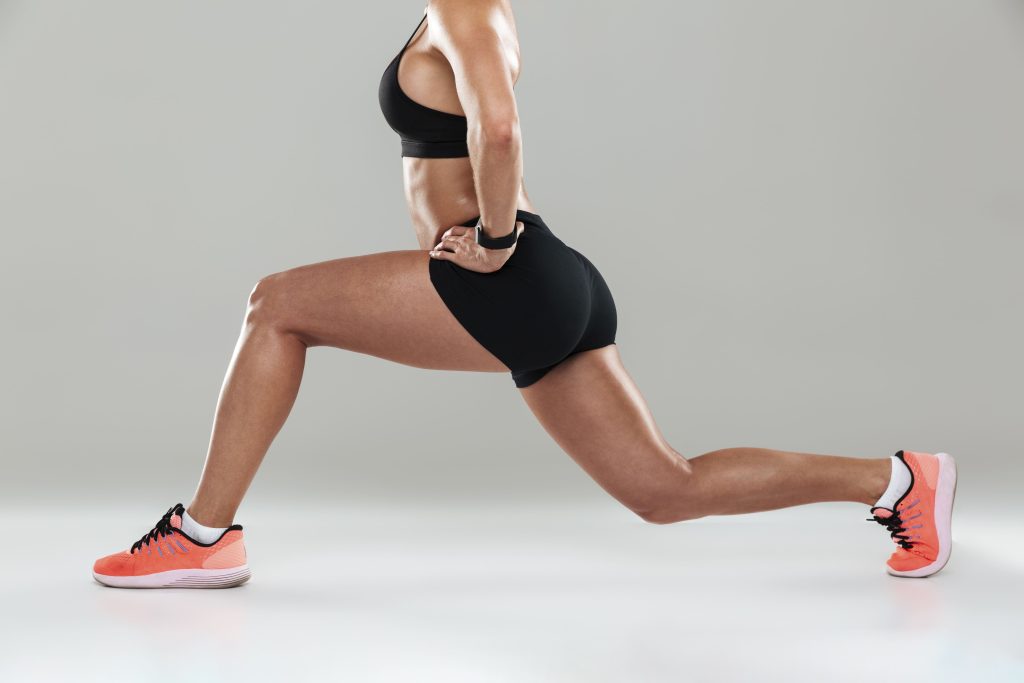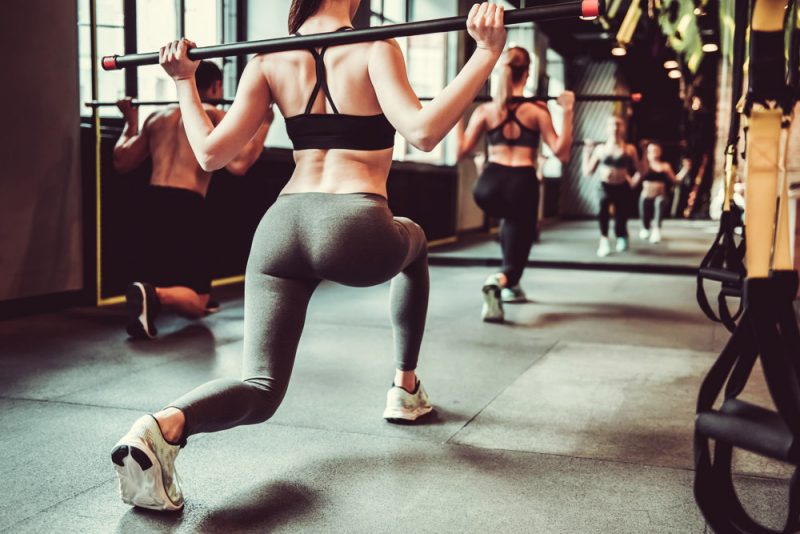
Lunges are one of the most practical and popular exercises for getting in shape and strengthening your body. You may already have heard of Split squats ? Well, that’s just another name for slots. Whatever you call them, lunges are a fundamental exercise that involves several muscle groups and offers numerous health and fitness benefits.
In this article, you’ll discover all the reasons why lunges are such a powerful exercise and how you can include them in your regular exercise routine. Whether you’re an athlete looking to improve your performance or just someone who wants to get into better shape, lunges can be a great choice for you.
So, ready to discover how to correctly perform a lunge to get the most out of one of the best moves for the body? You’ve come to the right place!
How can you incorporate lunges into your training routine?
Lunges are a great exercise to include in your workout routine. In fact, they work several muscle groups such as the legs, hips and buttocks, effectively strengthening these areas.
If you’re a beginner, start with lunges on the spot or walking lunges to get used to the exercise. Don’t worry, we’ll take a closer look at these types of slots later ;). Gradually increase the intensity of the lunges you perform by adding weights or using lunge variations, which we’ll explain in more detail below.
Another way to integrate lunges into your routine is to use them as a booster or warm-up exercise. before doing deadlifts, push-ups or other muscle-building exercises. For better results, train regularly and vary the types of lunges you do.
Keep in mind that technique is essential to avoid injury. Always begins with light weights or without ballast for work on your technique and mobility. Above all, don’t hesitate to ask the advice of a sports coach to help you perfect the execution of the exercise.
Tips to avoid common mistakes when creating a slot
Correct execution of lunges is crucial to achieving the desired results and avoiding injury. You need to make sure you have correct postureKeep your back straight, chest up and buttocks back as you descend towards the ground. Here are a few tips to help you avoid common mistakes when making a slot:
- Keep your back straight and don’t arch.If you don’t, you risk lower back pain later on. To do this, tighten your abdominal muscles.
- Always raise the heel of the rear foot to avoid hip strain.
- Balance your weight and don’t slouch forward, risking back pain.
Different variations of lunges for different levels of fitness and mobility

It’s important to understand that not everyone has the same physical condition and ability to perform lunges. Variations on lunges are a great way to adapt the exercise to your level of fitness and mobility. For example, if you’re a beginner or suffer from joint pain, you can start with lunges on the spot and increase the intensity over time.
You can also modify the exercise to make it more difficult. Lunges with a jump, front lunges with weights and lunges with one leg raised are more advanced variations that can help increase the difficulty and intensity of the exercise.
In a nutshell, there are a variety of lunge variations that can be adapted to all levels of fitness and mobility. We invite you to discover these variations and choose the ones that best suit your goals and needs.
Focus on 4 types of slits and how to create them
Walking lunges: the basic lunge exercise
Walking lunges are a popular form of leg exercise that can be customized to suit your level of fitness and mobility.
You can perform the walking lunge by bringing one leg forward and slowly lowering it until the back knee is slightly below 90°. Keep your back straight and your hips bent as you descend with your front knee no higher than your ankle. Once you’ve reached the bottom, push up on your front foot and bring your back leg forward before repeating the same step with your other leg. Don’t forget to activate your muscles throughout the movement, and to take a few seconds’ break between each repetition.
Lunges on the spot: a classic lunge, ideal for hip mobility
Lunges on the spot are a type of leg-building exercise that can be performed anywhere, whether it’s in your living room or at the gym.
Start by taking a step forward with your left foot and bend your right knee to descend slowly while keeping your back straight. Once you’re down, press down on your left heel to raise yourself up and repeat the same movement with the other leg. You can adapt the amplitude to your level and increase the difficulty by adding dumbbells or extra weights.
Bulgarian split squats: an intense lunge variation
Bulgarian split squats or Bulgarian lunges are an exercise that puts your skill and coordination to the test.
To make them, the movement is simple. Start by positioning yourself in a squat position with your back straight. Then place your back foot on a step or platform and bend your knees to descend slowly until your back thigh is parallel to the ground. Once you’ve reached the bottom, press down on your heels to return to a vertical position and repeat the operation on the other leg. By performing this variation of the lunge exercise, you’ll work your upper quadriceps and glutes.
Reverse slots: a slightly more complex variation

The inverted slot is an exercise that primarily targets the thigh and gluteal muscles. To perform this exercise, start by placing your hands and arms on your hips. Then take a big step backwards and lower yourself until your front knee is below 90°. Then press down on your heels to raise yourself vertically, and return your back leg to its original position. Repeat the movement with the other leg, varying the difficulty by adding dumbbells or extra weights. Don’t forget activate your core during each repetition to maintain good posture throughout this lunge exercise.
Reverse lunges with the smith machine: a variant of the reverse lunge for beginners
To perform this movement, start by placing yourself in front of the machine and adjust the bar to a height where your thigh will be parallel to the floor when you perform the movement.t. Once you’re in position, lower one of your legs to the floor, until your knee is slightly below 90°. Once you have reached this position, press down on your heels to raise yourself slowly, holding the bar firmly. Repeat the movement with the other leg and don’t hesitate to add weight to increase the difficulty of the movement.
In a nutshell, lunges in sport:
Lunges are a versatile versatile and efficient movement which can add considerable benefits to your health and sporting performance. Whether you’re a beginner or a seasoned veteran, experimenting with different lunge variants is the best way to find the one best suited to your goals and activity level. What’s more, to support you in your sporting activities, don’t hesitate to download our Featness to stay motivated and achieve the results you want.
Try the 7-day application, you’ll see, you won’t regret it! 😉




